Fashion – His and Hers
Viva la difference. Men and women, of course, wear very different clothing and their fashions vary with the seasons. Today, in 2014, sleek lines and textured dresses are on offer together with bold blocks of color, boxy jackets, silk scarves and lots of sequins. It continues to be fashionable for women – of all ages and sizes - to wear straight tight pants or leggings making them look suspiciously like they are parading in their underwear, with tops in varying colors, many revealing low décolletages. What in some earlier decades would have been viewed with horror, revealing all, or as much as possible, is now the 'in-thing' it seems. A couple of years ago a friend of my own mature age was telling me about the latest outfit her 30-something-year-old daughter had recently purchased, describing it as 'fantastic, really tight, short and sexy' and I remember feeling very surprised. Why would an average, traditional woman be happy for her attractive daughter to dress in such a provocative way? Today mainly older men have a tendency to wear regular loose-fitting clothing, be it smart pants or jeans, with a plain shirt, t-shirt, sweater or jacket, none of which reveal either the contours of their bodies or any obvious 'bulges' and don't appear intended in any way to particularly draw attention to themselves. This made me wonder, and I decided it might be fun to take a lighthearted look at fashion 'His and Hers' throughout the (fairly recent) ages:
1940s – 1950s
In Britain, clothing rationing remained in place until 1949. The 40's heralded the pencil slim skirt, bolero jackets, stand away collars and the 50's brought in leather jackets, baby-doll nightwear, stiletto heels and ballerina shoes, mink stoles and the bikini.
In 1947, Christian Dior launched the first collection of the House of Dior. The new collection went down in fashion history as the 'New Look'. The signature shape was below-mid-calf length, full-skirt, pointed bust, small waist, and rounded shoulder line. The radical new silhouette soon became immensely popular, influencing fashion and other designers for many years to come.
From the same era, these instructions for putting on fully fashioned seamed nylon stockings made me smile: 'They should be rolled right down to the toe before putting on then rolled on gently, eased over the heel then be rolled slowly up the leg and the seam should be checked for straightness. Stockings should always be put on while the wearer is seated and with the legs lightly bent. The suspender should be fastened while the knee is bent and never too tightly'.
And then, a stern warning: 'Never smoke while putting on stockings, as the minute particles of hot tobacco ash will melt through the nylon yarn and holes and ladders are bound to result'.
In Britain immediately after the war, men's suits were broad-shouldered and often double-breasted. As wartime restrictions on fabric eased, trousers became wider and usually had turn-ups. Demobilized soldiers were provided with a suit by the government, usually in blue or grey chalk stripes. In 1950, Savile Row introduced the 'New Edwardian Look', featuring a slightly flared jacket, natural shoulders, and a narrower cut, worn with a bowler hat and a long slim overcoat with velvet collar and cuffs. This was the style appropriated by the Teddy Boys, who added bright socks and a bootlace necktie.
1960s - 1970s
Two main changes in coat fashions marked the beginning of the '60s - emphasis on shorter coats and sweepingly full coat shapes. Many daywear clothes abandoned collars in favor of contrasting colored piping which also edged the jacket and pockets or cuffs. This was the time of miniskirts, baby-doll clothes, stretch fabrics, synthetic materials, sunglasses with slits and the PVC – 'hippie look'.
Fashion also got physical - jogging and aerobics popularized sneakers, new fabrics like fleece, lycra and sweatshirt jersey, disco – dressing for effect in shiny, reflective fabrics and skintight spandex, punk – body piercing, slit skirts, safety pins and dyed hair.
Hair played a strong and changing role in early '60s fashion. The bouffant hairdo, arranged in a high global shape, was the prime favorite until the entry of the short boyish haircut, which took over and quickly became very 'in'.
1970
1970s fashion, which began with a continuation of the miniskirts, bell-bottoms and the androgynoushippie look from the late '60s, was soon noted for several trends. These included platform shoes (for men and women); wide-legged, flared jeans and trousers were another must for both sexes, a style immortalized in the 1977 film Saturday Night Fever. The 'disco look', complete with three-piece suits for men and rayon or jerseywrap dresses for women, lasted until gradually replaced by punk fashion and straight, cigarette-legged jeans. Women's platform shoes gave way to mules and ankle-strapped shoes, both reminiscent of the '40s, at the end of the decade. Jeans were frayed; tie-dye shirts and peasant blouses were popular. In addition to the mini skirt, mid-calf-length dresses called 'midis' and ankle-length dresses called 'maxis' were also worn. In 1971, tight-fitting shorts, called hot pants, were a fashion craze for girls and young women. The dancer's leotard became an important feminine fashion accessory in 1974, and throughout the decade. The 70s also introduced military styles for men - fake uniforms and army surplus, olive green and khaki colors.
1980s - 1990s
1970s fashion, which began with a continuation of the miniskirts, bell-bottoms and the androgynoushippie look from the late '60s, was soon noted for several trends. These included platform shoes (for men and women); wide-legged, flared jeans and trousers were another must for both sexes, a style immortalized in the 1977 film Saturday Night Fever. The 'disco look', complete with three-piece suits for men and rayon or jerseywrap dresses for women, lasted until gradually replaced by punk fashion and straight, cigarette-legged jeans. Women's platform shoes gave way to mules and ankle-strapped shoes, both reminiscent of the '40s, at the end of the decade. Jeans were frayed; tie-dye shirts and peasant blouses were popular. In addition to the mini skirt, mid-calf-length dresses called 'midis' and ankle-length dresses called 'maxis' were also worn. In 1971, tight-fitting shorts, called hot pants, were a fashion craze for girls and young women. The dancer's leotard became an important feminine fashion accessory in 1974, and throughout the decade. The 70s also introduced military styles for men - fake uniforms and army surplus, olive green and khaki colors.
1980s - 1990s
In the early '80s men and women began to wear looser shirts and tighter, close-fitting trousers. Due to the influence of television shows, men also grew mustaches. Medium-length hair was common for men, while the longer haircuts of the '70s went out of fashion. Very long hair for men became fashionable in the late '80s due to the influence of Heavy Metal music. Brand names became increasingly important, making 'Ralph Lauren' and 'Calvin Klein' household names, among others.
In late 1984, Madonna became a fashion icon for many young women who copied her look with short skirts over leggings, brassieres worn as outer clothing, crucifix jewelry and fishnet gloves. The television shows Dallas and Dynasty also had a strong impact, especially in the increasingly oversized shoulder pads. Many women's outfits had velcro on the inside of the shoulder where shoulder pads could be attached. Headbands became fashionable in the early '80s. Other trends were leg warmers and miniskirts, which returned for the first time since the early '70s, especially 'ra-ra' skirts, modeled after the short, flared skirts worn by American cheerleaders. Leg warmers, which had long been staple rehearsal gear for professional dancers, became a teen trend at about the same time; their popularity, and that of sweatshirts with their collars cut off, commenced following the 1983 release of the film Flashdance.
Fleece tracksuits were first worn by athletes but in the '80s became increasingly fashionable as leisurewear, though jackets and trousers tended to be worn separately rather than as a suit. Nylon Shell suits became particularly popular in Britain by the early '90s which saw a continuation of '80s fashion. Casual clothes became a fashion trend for teens with leggings worn with oversized sweaters and sweatshirts in the winter, and with oversized T-shirts in the summer. Women also wore tight-fitting trousers with elastic boot-straps (stirrup pants/leggings), denim button down shirts, neon colors, drainpipe jeans, T-shirts, sweatshirts, black leather jackets, court shoes and cowboy boots.
Men's business attire saw a return of pinstripes. Three-piece suits went out of fashion in the early '80s and lapels on suits became very narrow (similar to '50s styles). Button-down collars returned, for both business and casual wear. At this time it became fashionable to leave shirts untucked. In Europe single-breasted three and four button suits began to replace the 1980s power suits. In America men began to dress smart-casual and business-casual, a trend inspired by Bill Gates of Microsoft.
2000s onwards ….
Flip flops, ponchos, flared trousers, denim jackets, tank tops that exposed the midriff - all characterized the start of the 2000s for women. Men's fashion was influenced by retro culture with vintage T-shirts and slim fit jeans, Argyle pullovers, baseball caps, and Adidas or Nike trainers.
From the mid 2000s onwards, European and American women wore low-cut skinny jeans, knee-high boots with pointed toes, '60s-style trench coats, tunics worn with wide or thin belts, capri pants, longer tank tops worn with a blouse or shirt, '40s-inspired New Look dresses and sandals, leggings, and 'vintage clothing' including hippie and boho inspired dresses with paisley patterns. Crocs were a popular fad for both sexes in the summer of 2006, despite their kitsch connotations and indeed, are still around today.
In the late 2000s, headbands, knitted sweater dresses, wonderbras and sloggi underwear, ballet flats, skinny jeans and light shirts worn with a camisole underneath were popular among young women. Long, baggy shirts were often clinched in with a belt. Leather jackets and fur coats (previously avoided due to their association with animal cruelty) made a comeback. This period also witnessed clothing in contrasting colors. Black leather jackets with white T-shirts and straight leg jeans and v-neck sweaters were popular with men.
And so we come full circle, with the New York Spring/Summer Season 2014 verdict offering plenty of variety. The trends include big hair, lush rainbow hues, lots of short floral dresses, the ubiquitous denim and supersize bags. For men striking colorful cord jackets, double breasted blazers, patterned jackets plus printed pants and white suits are sure to be eye catching. White is still a firm favorite for summer whether lacy or crisp cotton in cool, clinical brilliance. An aquatic theme with fish prints on shirts and skirts also promises to cause a stir. Feathers are set for evenings in autumn together with checks and tartan. It seems that hot pants are being phased out and are being replaced by wide, just below knee length culottes and it will be interesting to see if the young set is ready to give up their short shorts.
Closer to home, Israelis are fashionable but like to be comfortable too. Trends from Europe tend to arrive in Israel before they go to the States, and while Milan, Paris, and London may be known as fashion capitals of the world, Israel comes next. You'll start seeing the trends here first, long before they become fashion fodder for the American set. One of the most popular medium priced chain stores in Israel presented its Spring 2014 fashion show divided into three lines, Red, Black and Blue. The Red line featured floral patterns, geometrical shapes, frilled skirts and oversized jerseys for girls, and loose-fitting tees and chinos for boys. The Blue line focused on denims with, contrary to New York predictions for culottes, really short shorts, and bare-midriff shirts. Lots of white and blue was seen in both the women's and men's lines. Finally, the Black line appeared to soften the hard edges of Red and Blue. The women's line was romantic, with frilled white blouses and voluminous skirts and the designers applied geometric shapes to flowing, pastel fabrics. The men's line introduced unusual colors in suits, button-down shirts and slacks.
Over the last few summers, flip flops ruled. It was rare to see an Israeli without them, worn even to the dressiest of nightclubs. Generally, while young women often prefer dresses and like to trade denim for leggings, men will wear jeans, even to lavish affairs. Ties are practically non-existent. And unless you're a relative of the bride or groom, you'll often see guests at a wedding in jeans and casual tops they'll just as likely wear walking down the street. If dressing up isn't your thing Israel, where anything goes, is the place to be.



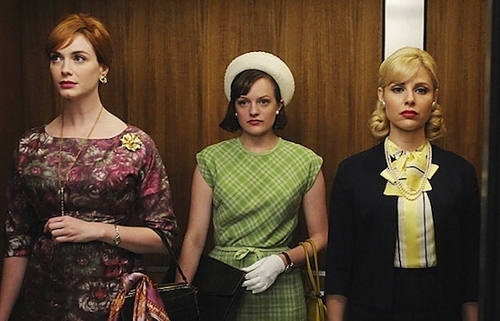
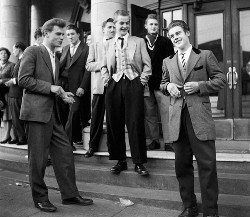
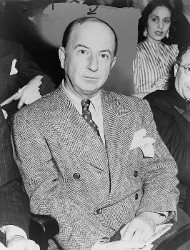
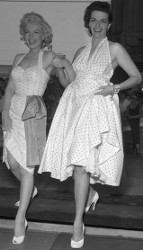
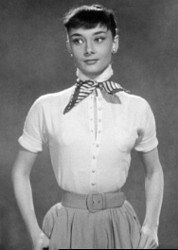
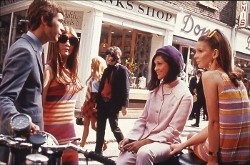
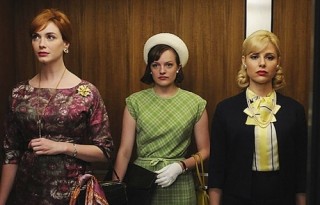
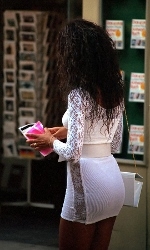
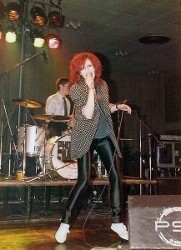
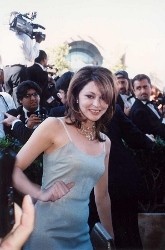
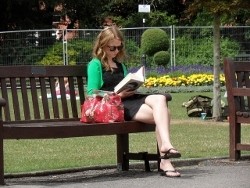
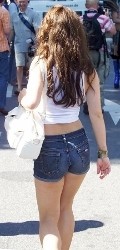
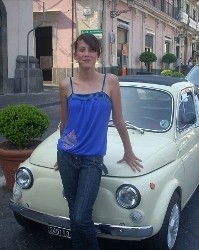

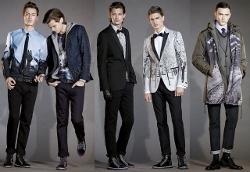




Comments